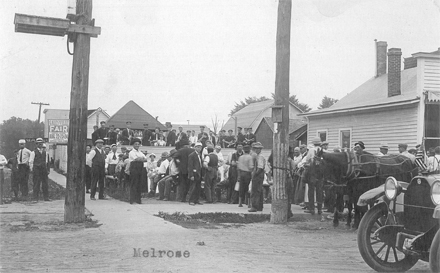
Dating Vintage Photographs
(written by Anita Taylor Doering, Archives Staff)
Let me share some tips with you to help date late 19th century and early 20th century photographs. If you have studio portraits in your family collection, certainly trying to identify the clothing and hairstyles can be helpful. However, many people wore their “best” clothing at the sessions and men often borrowed clothing from a rack at the photographers’ studio. Maureen Taylor has written several books such as Uncovering Your Ancestry Through Family Photographs and, More Dating Old Photographs as well as Family Photo Detective. These books can also help you with photographic images and processes that are older than what I'm discussing here.
If you have cabinet photographs from La Crosse photographers, you will want to check out Edwin Hill’s extensive thesis titled “A History of Photography in La Crosse, Wisconsin, 1853-1930.” You can access it online at http://www.lacrossehistory.org/arts/Hill.pdf. If you have a photo that includes information about the photographer on the front or back of the picture, this information can help date it. You can search the text for “Meason” for example and find that the Meason firm moved to 1223 Caledonia Street by 1905 and two years later the firm moved to 320 North 4th Street. This can help you date the photograph.
If you are so lucky as to see an automobile in the photograph, this can also help. If you’re really lucky, you might spot a legible license plate. Wisconsin license plates had the last two digits of the year printing in a vertical manner on the side of the plate, much larger than the stickers used today.
For real photo postcards, if the postcard is not stamped and it has a spot for a stamp in the upper right corner (called a stamp box), it was likely printed on Kodak’s AZO paper, a professional grade photographic paper developed and printed in a darkroom. This was used by traveling photographers who showed up on the street taking outdoor photos of children in a wagon being powered by a goat. The photographers also took many street views of towns all over the United States and beyond.

The style of these stamp boxes varied over time which can help you date a scene. For instance, this real photo postcard of a gathering in Melrose, Wisconsin, was taken between 1904 and 1918. How do we know that if we aren’t familiar with the Melrose community?
Look closely at the stamp box below from the side that is intended to have writing and an address. I have highlighted the corners of the stamp box below to draw your attention to the arrows on the corners. You can also clearly see the "AZO" name printed in between the triangles or 'up' arrows.

If the four triangles are all pointing upward, the photo likely dates from 1904-1918.
If there are two ‘up’ and two ‘down’ triangles (like the sample below), the photo likely dates from 1918-1930.

If you find four squares in the corners instead of triangles, it likely dates from 1927-1940. I don’t have an example handy of that to share.
Lastly, if you take photographs that you think will be useful to others in the future, remember to associate the who, what, where and when with your photographs whenever possible. It will help you and others who come after you make sense of it all.
Go forth and date your photos!

